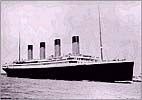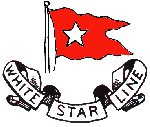20,000 Leagues Under the SeaToday’s technology has opened up the ocean depths; a cause for great excitement and added caution. Witness the controversial salvage of the Titanic. No ship better illustrates the promise and pitfalls of technological progress than the Titanic. Hailed as unsinkable, the luxury liner hit an iceberg on her maiden voyage in 1912, killing some 1,500 people in the worst maritime disaster of the time. But in 1985 the wreck re-emerged in a spectacular example of what naval know-how could do in civilian hands.
Triumphant, Ballard and the team returned in 1986 with Alvin, a Navy submersible, capable of carrying three people to depths of 4,000 m. Originally designed to find wrecked planes and plant deep microphones, Ballard used the craft to energize and direct Jason Junior. Known as ROVs, these remotely operated vehicles have revolutionized deep-sea exploration, with operators using video screens and joysticks to direct them from surface vessels or submersibles. Ballard focused Jason's video and still cameras with high intensity lights to provide an intimate glimpse of the lost liner. The floating eye and other cameras moved in and out of the ship, photographing thousands of objects lying in the ooze of the debris field – coal, fine china, wine bottles and pairs of shoes.
His French partners, however, returned in 1987, joined forces with a New York businessman, George Tulloch, who formed the company RMS Titanic Inc. Under international law, the team won salvage rights to the liner’s hulk by being the first to recover artefacts using the French submersible Nautile. The craft’s mechanical arms, each capable of lifting about 115 kilos, recovered some 4,000 artefacts, often by attaching them to lift bags filled with diesel fuel or syntactic foam, which floats but does not compress at great depths. Pledging to neither sell the artefacts nor disturb the main wreckage, RMS Titanic Inc. restored and exhibited many of them in Europe, with a North American debut scheduled this April. "If those items are left down there, eventually they’ll disappear," said Charles A. Haas, a Titanic historian. "Government funding of deep-sea archaeology is zero. It’s essential that corporate funding of one form or another be found." The technology required for the excavations certainly commands a steep price. Having spent $20m, RMS Titanic Inc. is anxious to turn a profit through a range of merchandising angles. The Bass Ale company, with 12,000 bottles having gone down with the ship, has paid $250,000 so that its sweepstakes winners could watch an expedition in August 1996. Money also lies in deep cinematography, with the cable tv Discovery Channel paying $3m for access to the expeditions. To witness the eventAs expensive and astonishing as it is, this technology still doesn't guarantee that a wreck and its contents will not be damaged. On 31 August 1996, RMS Titanic Inc. tried to raise the largest piece of the sunken liner yet: a 8m x 7m section of the hull, weighing about 14 tonnes and bearing four portholes and the remnants of four others. The team attached four large diesel-filled rubber bags to the hull plate and within several hours, it had floated to about 60 m below the ocean surface. The plan was to lift the section onto a ship heading to New York Harbour, symbolically ending the doomed voyage that began 85 years ago from Southampton, England. Two cruise ships came to witness the event, with passengers paying as much as $6,000 per place in a cabin. But when the seas became rough, the salvagers decided to tow the hull about 80 miles away expecting smoother and shallower waters. But still far from the new destination, two of the balloons broke loose, setting free the hull section, and the Titanic hit the bottom, once again. But "they’re planning on going back," said Philip S. Pennellatore, a spokesman for RMS Titanic. Perhaps these are normal setbacks. But the Titanic is such a cultural icon that the jolts should sound alarms and spur discussion. Submersibles, ROVs and sonar scans have launched us into the space age of deep sea exploration. The question remains, however, as to who will use these tools and who will benefit from what they uncover – a question rich in new kinds of promise and peril. William J. Broad Author of The Universe Below Published in UNESCO Sources, February 1997 Related documents
Further reading
Links
|

 Ballard initially
called for the recovery and restoration of artefacts strewn between the stern and the bow, arguing
that they should be restored as a memorial to the dead. He later reversed his position, as
survivors and Titanic societies around the world branded it grave robbing.
Ballard initially
called for the recovery and restoration of artefacts strewn between the stern and the bow, arguing
that they should be restored as a memorial to the dead. He later reversed his position, as
survivors and Titanic societies around the world branded it grave robbing.  Back to Nordic Underwater Archaeology
Back to Nordic Underwater Archaeology